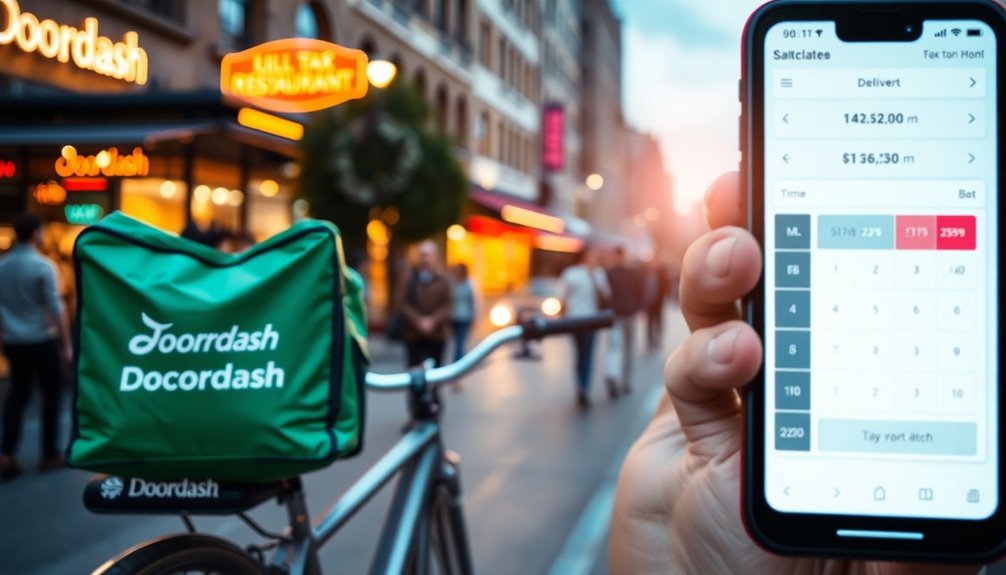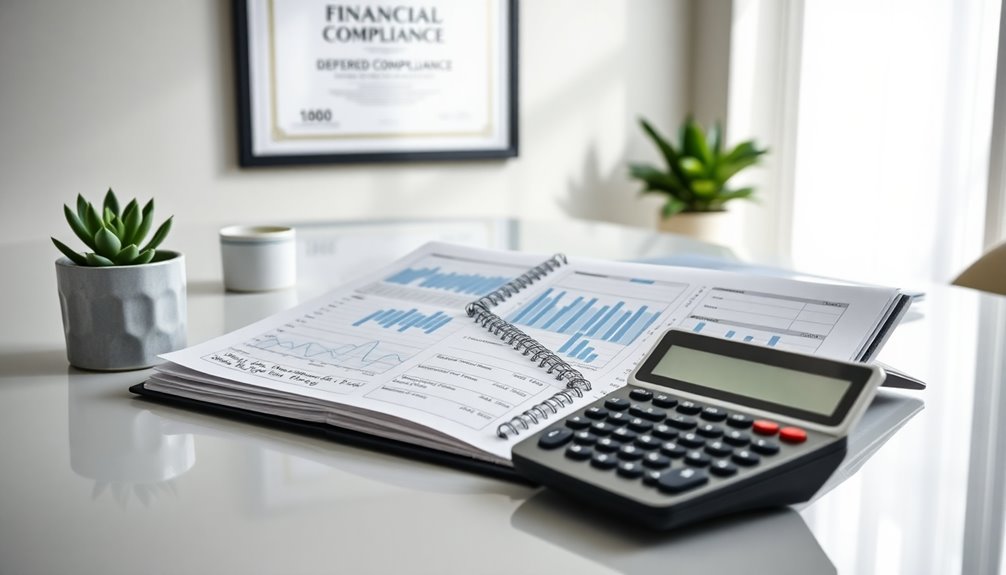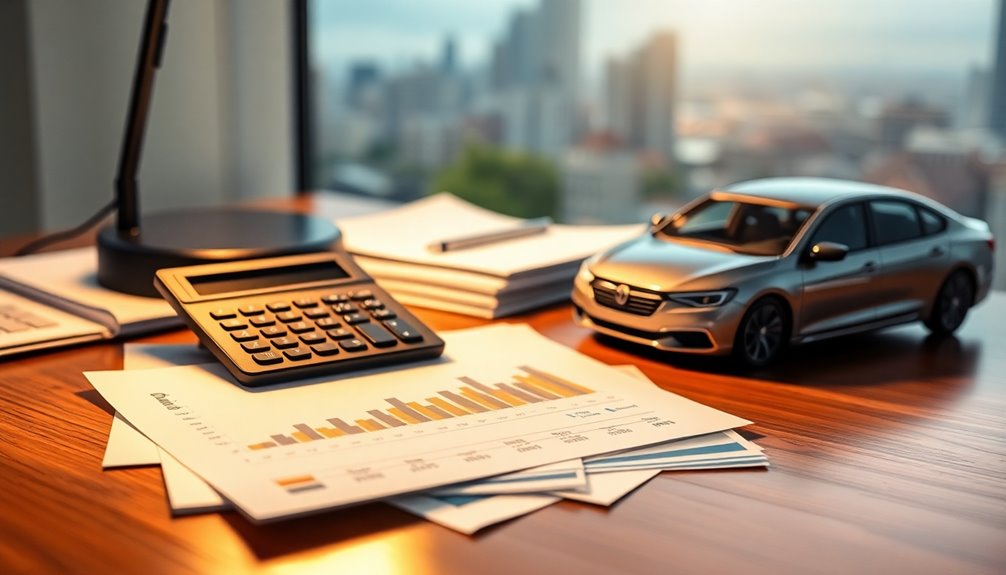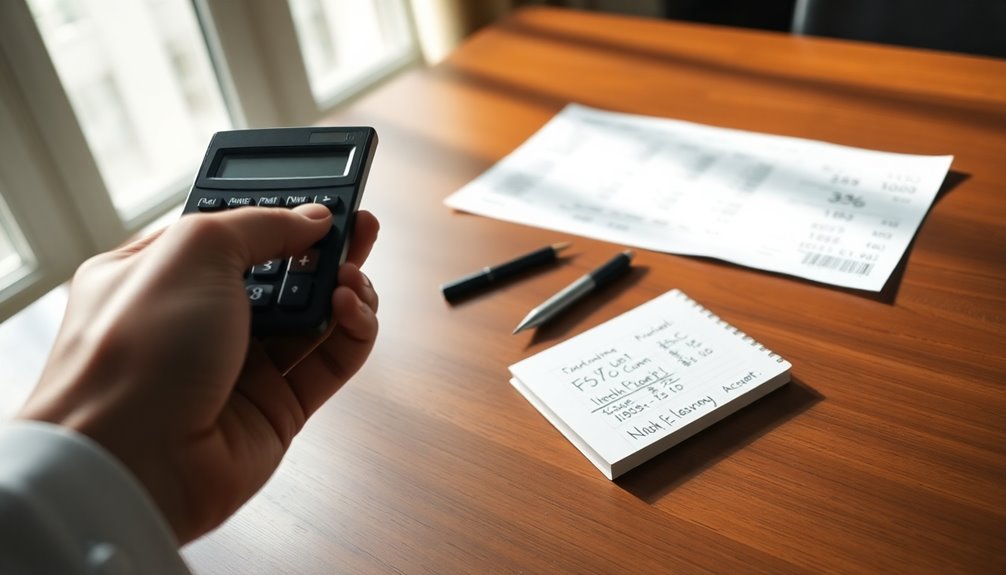As a DoorDash driver, you're classified as an independent contractor, which means you'll receive a 1099-NEC form for tax purposes. You're responsible for paying federal and self-employment taxes, with the self-employment tax rate at 15.3%. If you earn $600 or more, you'll need to report your income using Form 1040 and Schedule C. Be prepared to make quarterly estimated payments if your tax liability exceeds $1,000. You can also deduct vehicle-related expenses, so keeping track of your mileage and expenses is essential. There's a lot more to consider, and understanding these details can really help you maximize your earnings.
Key Takeaways
- DoorDash drivers are independent contractors and receive a 1099-NEC for earnings of $600 or more, not a W-2.
- They must pay federal, state, and self-employment taxes, with a self-employment tax rate of 15.3%.
- Drivers can deduct vehicle-related expenses, choosing between the standard mileage rate or actual expenses for tax purposes.
- Quarterly estimated tax payments are required if the tax liability exceeds $1,000, due on specific dates throughout the year.
- Accurate record-keeping and organized documentation are essential for maximizing deductions and ensuring compliance with IRS regulations.
Tax Status of DoorDash Drivers
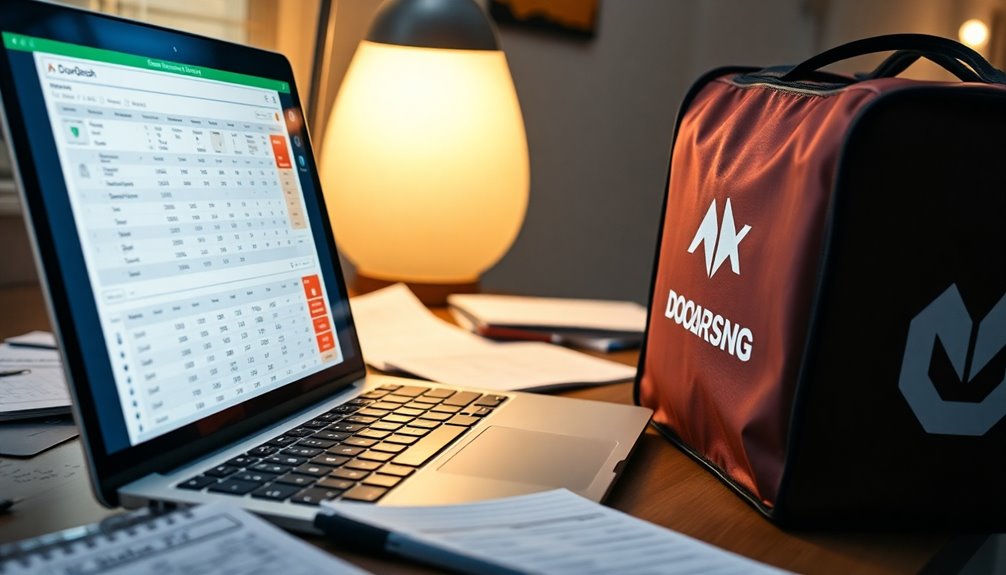
DoorDash drivers are classified as independent contractors, which means they aren't employees of the company. Instead of receiving a W-2 form, you'll get a 1099-NEC for tax purposes. This classification means DoorDash won't withhold any taxes from your earnings, so you're responsible for reporting your income and paying taxes yourself.
Typically, you operate as a sole proprietor unless you choose a different business structure. As an independent contractor, you need to pay federal and state income taxes, along with self-employment taxes, which include Social Security and Medicare. The self-employment tax rate is 15.3% of your taxable income, while federal income tax rates can range from 10% to 37%, depending on how much you earn.
State income tax rates vary widely, from 0% to 13.3%. Additionally, DoorDash drivers can also lower their taxable income by deducting business-related expenses. This includes mileage, parking, tolls, and even cell phone usage.
Keeping accurate records of your expenses and mileage throughout the year is crucial, as it helps you claim the right deductions and avoids potential tax issues.
Filing Your Federal Tax Return
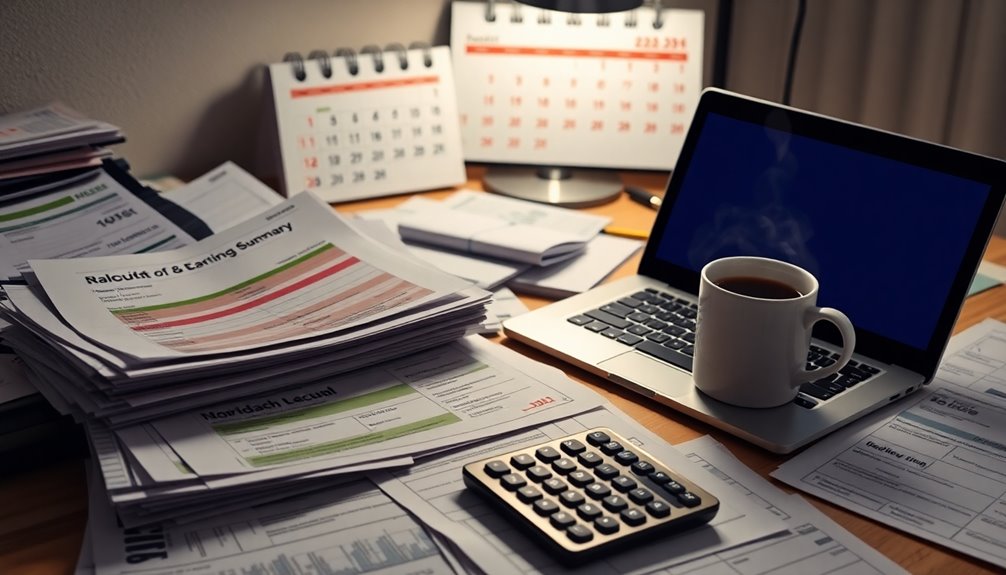
Filing your federal tax return as a DoorDash driver involves accurately reporting your income and expenses to ensure compliance with tax laws. If you earn $600 or more in a year, you'll receive a 1099-NEC form detailing your earnings. You can download this form through your Stripe Express account, typically available within 10 business days of issuance.
Make sure your Social Security Number (SSN) or Employer Identification Number (EIN) is correctly linked to your DoorDash account to avoid issues.
When filling out your tax return, report your income using Form 1040. The earnings from your 1099 form are crucial for calculating your federal, state, and self-employment taxes. Additionally, if you expect to owe estimated taxes, you must calculate and pay them quarterly to avoid penalties.
You'll also need to complete Form Schedule C to report your business income and expenses. Don't forget to deduct business-related expenses like mileage and phone usage to lower your taxable income.
Once you've prepared your return, submit it electronically or by mail, ensuring all required forms are included.
Lastly, remember that quarterly estimated taxes may be necessary throughout the year, so keep track of your earnings and expenses diligently.
Understanding Self-Employment Taxes

Navigating self-employment taxes can be daunting for many independent contractors. As a DoorDash driver, you're classified as an independent contractor, meaning you're responsible for managing and paying your own taxes.
Unlike employees, DoorDash doesn't withhold taxes from your earnings, so it's crucial to set aside money for federal, state, and self-employment taxes. It's important to note that self-employed individuals are required to pay taxes quarterly, which adds another layer of responsibility to your tax management. Additionally, having a clear understanding of budgeting can help you allocate funds for your tax obligations effectively.
The self-employment tax rate is 15.3% of your net earnings, which includes 6.2% for Social Security and 1.45% for Medicare. While employees have their employers cover half of these taxes, you must pay the full amount yourself.
Remember, this rate applies only to your self-employment income, not any income from other jobs. You can reduce your taxable income by deducting business-related expenses, such as mileage, phone usage, and vehicle maintenance. Keeping accurate records is vital to maximize these deductions.
When it's time to file your taxes, DoorDash will issue you a 1099-NEC form if you earned $600 or more. This form reports your earnings, and you'll need to include this information in your tax return on Schedule C.
Accuracy is key to staying compliant with tax regulations.
Making Estimated Quarterly Payments
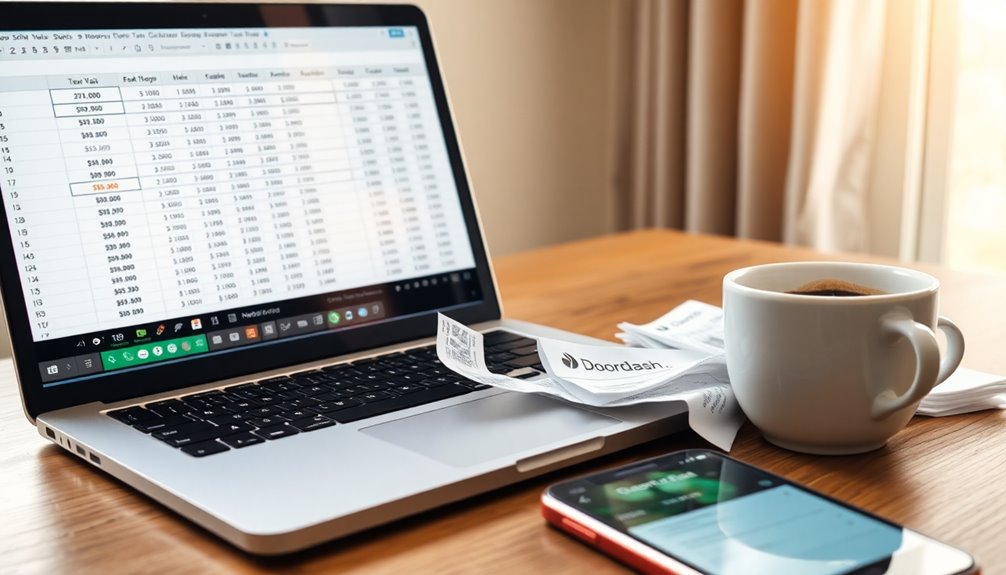
As an independent contractor, you not only need to manage your self-employment taxes but also make estimated quarterly payments to avoid penalties. If you expect to owe $1,000 or more in taxes, you must make these payments. This applies to you as a DoorDash driver, especially if you've earned more than $600, which qualifies you for a 1099-NEC form. Additionally, even if you earn below $600, you are still required to report all income, including non-employee compensation.
Remember, your quarterly payments are based on your total tax liability for the year. The deadlines for these payments are set: the first quarter payment is due on April 15, the second by June 15, the third by September 15, and the fourth by January 15 of the following year.
Late payments can lead to penalties, so it's crucial to stay on schedule. To calculate your estimated taxes, use IRS tools and set aside about 25-30% of your earnings for tax purposes.
You won't need to file separate returns for these quarterly payments, but keep detailed records for your annual tax return. If you're uncertain about your calculations, consider consulting a tax professional to ensure compliance and accuracy.
Eligible Tax Deductions for Drivers
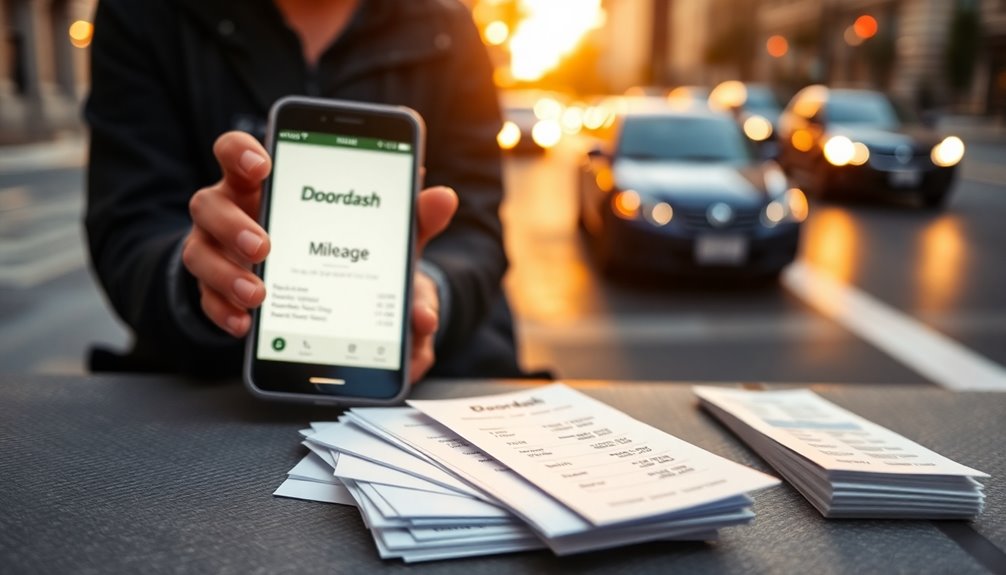
Understanding your eligible tax deductions as a DoorDash driver can significantly impact your overall tax liability. One of the most significant deductions you can take is for vehicle-related expenses. You can choose between the standard mileage rate, which is $0.56 per mile in 2023, or deduct actual expenses like gas, maintenance, and repairs. If you opt for the standard mileage method, these costs are already factored in.
Besides mileage, you can also write off tolls and parking fees as separate business expenses. If you use your cell phone for DoorDash, don't forget to deduct the portion of your bill that relates to your deliveries. Additionally, it's important to report all earnings as business income to ensure compliance with IRS regulations.
Other deductible items include insulated courier bags, health insurance if paid personally, and even retirement contributions. If you're leasing your vehicle, lease payments are deductible as well.
Additionally, keep track of auto loan interest, personal property taxes, registration fees, and garage rent, as these can also help lower your taxable income. Remember, distinguishing between business and personal use is crucial for accurate deductions.
Tracking Expenses and Mileage
Accurate tracking of your mileage and expenses is vital for maximizing your tax deductions as a DoorDash driver. DoorDash offers an automatic mileage tracking system that uses GPS technology to log the distance traveled between deliveries. You can view your past trips and mileage in real-time through the DoorDash Dashboard app. However, it's essential to double-check these totals at the end of your shifts, as GPS can sometimes be inaccurate.
Consider using mileage tracking apps like Everlance or Shoeboxed, which integrate with DoorDash. These apps allow you to track mileage either all day or on a trip-by-trip basis, providing visual route maps and features like auto-classification. Additionally, these apps help drivers maximize tax deductions by providing IRS compliant reports that ensure accurate tax documentation.
They also help categorize your work-related expenses, such as parking fees and vehicle maintenance. With the ability to snap photos of receipts, you can easily manage your expenses and keep everything organized. Regularly review your records and ensure you separate personal and business expenses. By exporting and organizing your mileage and expense data, you'll simplify tax preparation and stay compliant with IRS requirements, making your tax filing process smoother and more efficient.
Frequently Asked Questions
Can I Deduct Expenses for My Personal Vehicle Used for Deliveries?
Yes, you can deduct expenses for your personal vehicle used for deliveries.
You've got options like using the standard mileage rate or deducting actual expenses like gas, maintenance, and insurance.
Just make sure to keep accurate records of your mileage and any related costs.
If you track everything properly, you'll maximize your deductions come tax time, ensuring you get the benefits from your delivery work.
What Happens if I Miss the Tax Filing Deadline?
If you miss the tax filing deadline, you'll face penalties and interest on any unpaid taxes.
The late filing penalty kicks in, and you'll also owe a late payment penalty if you haven't paid your owed taxes. Interest continues to accrue until you settle the amount.
Ignoring the IRS's notifications can worsen the situation, leading to collection actions or audits.
To avoid this, consider filing for an extension and paying your estimated taxes on time.
How Do I Report Tips Received Outside the App?
To report tips received outside the app, you'll need to keep a detailed log that includes the date, amount, and source of each tip.
When you file your taxes, include these tips on your Form 1040 as part of your total taxable income.
It's crucial to track all tips accurately, as failing to report them can lead to penalties from the IRS.
Consider consulting a tax professional for guidance on proper reporting.
Are There Any Tax Credits Available for Doordash Drivers?
There aren't any specific tax credits for DoorDash drivers. Instead, you can take advantage of deductions to lower your taxable income.
While self-employed individuals might qualify for general tax credits, these aren't exclusive to DoorDash.
You'll want to focus on tracking your expenses, like mileage and supplies, to maximize your deductions.
Consulting a tax professional can help ensure you're making the most of the deductions available to you.
What if I Earn Less Than $600 in a Year?
If you earn less than $600 in a year, you still need to report that income on your tax return.
Even without a 1099-NEC form, taxes are owed on all earnings. You'll enter this income as "Other self-employed income" on Form 1040.
Keep track of any business-related expenses, as you can deduct them to lower your taxable income.
Conclusion
In conclusion, navigating taxes as a DoorDash driver can seem daunting, but it's manageable with the right knowledge. Remember to keep track of your earnings and expenses, and don't forget about those quarterly estimated payments! By understanding your tax status and taking advantage of eligible deductions, you can ensure you're not leaving money on the table. Stay organized, and you'll make tax season a lot smoother. Happy driving and filing!
